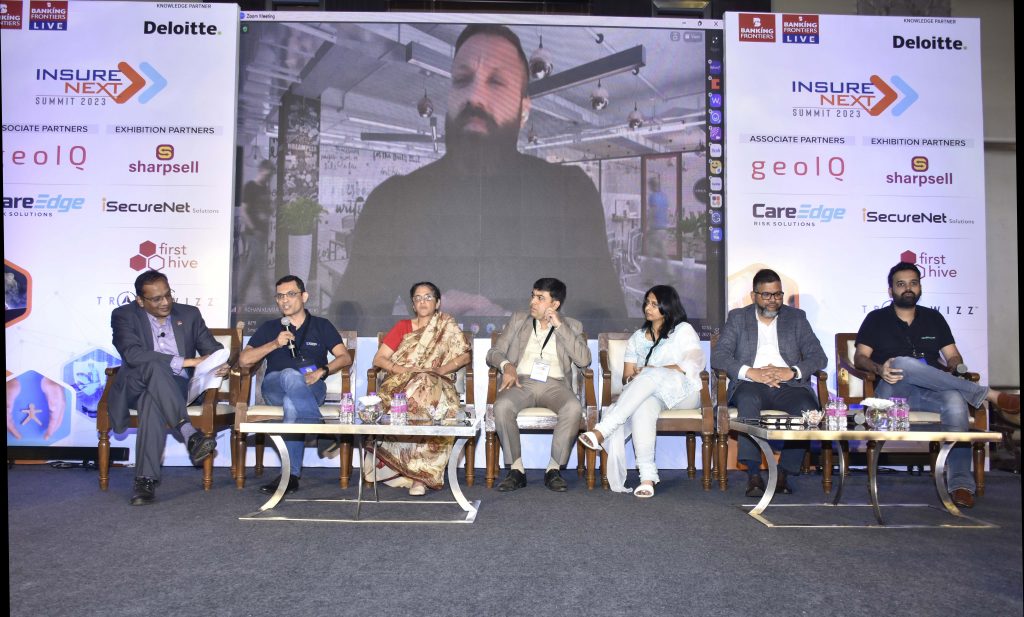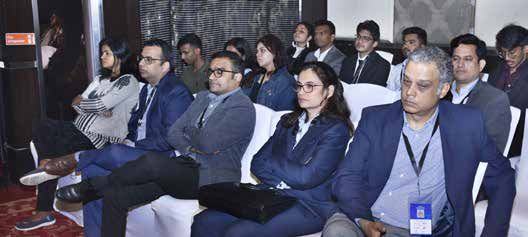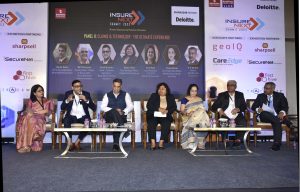We are supposed to be the 5th largest market in the world by 2025. We all are gearing up for this with insurance innovation and insurtechs. From the ecosystem perspective, there are so many areas where the foundation has to be built. We still need to build that foundation for the mega growth we are expecting. What is that foundation going to be like and how is the insurtech sector is going to power this? These issues were deliberated at InsureNext 2023 Conclave. Edited excerpts:

Guests
- Sanil Basutkar, Co-Founder, Healthysure
- Srinidhi Shama Rao, Chief Strategy Officer, Aegon Life Insurance
- John Mayne, Executive Director, Coverfox Group
- Rohan Kumar, CEO & Co-Founder, Toffee Insurance
- Poornima Subramaniam, Chief Financial Officer, Reliance Nippon Life Insurance
- Arindam Ghosh, EVP, Head of Strategy, Marketing & Digital, Star Union Dal-ichi Life Insurance
- Bahroze Kamdin, Partner, Delotte India
- Babu Nair, Founder & MD, Banking Frontiers (Moderator)
Babu Nair: From an ecosystem perspective, we still need to build on that foundation for huge growth. What is that foundation going to be like and how is the insurtech sector going to power it?
John Mayne: From a very long time, we are focusing on the distribution part only which is only one aspect of this entire ecosystem. We have sufficiently worked on that aspect. Now is the time to focus on the product, claim and processes. There is a lot of technology which have come in, but the adaption of those things has not been done yet. Which is mostly neglected, in the last few years we have seen that penetration is an issue. But we are not taking the right insurance product to the right person. So, we have to see how we can digitally reach those people. How we can collaborate with them and serve them.
Babu Nair: Poornima, I would like to know from your side, how do you see it as an insurance company?
Poornima Subramaniam: In sharp contrast, I would say within an insurance company, we are handling sales traditionally through direct marketing as well as digitally. But in my opinion, online sales still contribute a very small proportion of the overall business. So, the customer comes to the portal and does all comparisons but still, it doesn’t mean he will buy the product through digital means only. So according to me, we should all find a new distribution model, so that we can use the insurtech sort of infrastructure, platforms etc. and be able to get more sales.
Babu Nair: You have been doing a lot of work on the tech’s page. So, how do you see the penetration of insurtech in creating a stronger ecosystem?
Rohan Kumar: Although multiple new insurance companies have arrived and working efficiently in this field to fulfill the increased demand. But still feel there is a large gap. As compared to the population we are very limited, we have only around 60 companies. In the last couple of years, the demand has increased due to covid and the growth of the health system. So, to your question, more and more insutechs are coming in and solving for the various parts of the value chain and aggregation of these parts of the value chain will effectively create a sort of improvement in the overall penetration.

Babu Nair: What wow moment are you seeing when it comes to the insurance sector, where you can see how we can take this leap forward for growth?
Srinidhi Shama Rao: First, can we assess the individual without the barriers we have been putting as an insurance industry? So that as an ecosystem we are ready for the next leap in terms of trusting the digital footprints of the person given the giant trinity revolution that we have ahead of us. Secondly, if we see from a health perspective, although data is a tricky issue but still if we can get a critical volume of data. Today as a customer, the cost of acquisition is so high which makes it a major entry barrier. We need to work on this, which will make a big shift in how many people will reach out to us and bring down the market cost.
Babu Nair: What do insurtechs see the role here, what is that wow moment?
Sanil Basutkar: For me, the wow moment is how the government is promoting digital health tech, the fact that we have millions of data with respect to each and every health care. Through data analytics, government is promoting many progressive healthcare programs which ultimately bring down the cost of hospitalization and this will bring down the cost of insurance. If it is implemented correctly in the coming years with proper regulations, then definitely it is going to change the paradigm of the health industry of India.
Arindam Ghosh: I think apart from technology, there is also a big scope for product economics, and distribution economics. We talk about risk, analytics, distribution and the customer but at the same time, it needs to be a very strong value proposition. And wherever we are lacking in this, government and regulators know how to solve the puzzle of penetration. We have PMJJBY and PMSBY schemes are examples of this, which are profitable for the industry as well.
Babu Nair: Bahroze, you have been working a lot in the space of doing research and engaging with the fintech. What kind of new experiences are being built out now?
Bahroze Kamdin: We are working on achieving a high mortality penetration rate, which is very low in India. Then it is going to be the ‘wow’ moment. Now let’s talk about AI, we can see there are lots of block-chains which are working in companies. Now, we have to provide not just embedded products with the policy but also other facilities around it.
Babu Nair: Rohan, how do you see the experience road map here and what kind of changes do you see in experience with all these AI and ML technologies coming in? Where are all those action areas?
Rohan Kumar: If you conceptualize insurance products along with the primary asset or the primary usage, then the adoption and the attachment of that product becomes very easy. The more and more data we have, the better product building and better packaging we can provide.
Babu Nair: Shrinidhi, from the strategy perspective, this weak area of channels, what innovations are possible in that area?
Srinidhi Shama Rao: While working with tier 2 & 3 people in India, we see that they don’t have all the required documents like pay slips and all. Next, they think many times before spending their hard-earned money. So, the distribution economics from a traditional perspective becomes unmanageable. That’s where we are talking about AI and ML.
Babu Nair: John, any thoughts on how the micro insurance is penetrating?
John Mayne: The majority of people in India are under micro insurance. The insurance industry not only supports the ecosystem that belongs to it but the third party as well. So, customization and personalization need to be based on the customer’s needs.
Babu Nair: From an insurtech perspective, you have been working from the health side, how are you seen micro health insurance penetrate?
Sanil Basutkar: We are trying to create an infrastructure for the mass scale so that health insurance has propagated out throughout the country.
Babu Nair: Bahroze, we have a lot of penetration and the regulations that are getting a lot more streamlined. How is the investment scenario looking like? And how is the insurer and insurtech sector looking like?
Bahroze Kamdin: Now, private equity players are becoming investors in insurance companies. In India, insurtechs are getting funds from private equity players. But globally, we have seen insurance companies which have their venture capital arms.
Babu Nair: What is your insight on this from an insurer’s perspective?
Srinidhi Shama Rao: I will look for a distributor I am investing in. Can that person be more than just a distributor and provide value-added services and more insight to me while transferring my policy?
Babu Nair: Inclusion of insurance and penetration, what are the new changes that are observed?
Poornima Subramaniam: We have 30% of policies where women are the policy-holders. But in value, it is only 10%.
Babu Nair: Arindam, as a marketer what is your perspective on this?
Arindam Ghosh: I think, as more and more women are getting into the workforce, it will increase. Even in tier 2 & 3 categories, they have shown substantial growth. We need to create tailor-made products specifically for them.
Babu Nair: Rohan, any quick view on any kind of insurance product which is women-centric or for the lower realm?
Rohan Kumar: Yes, there are products for breast cancer and HIV disease besides the typical health insurance products. We only need to change the underwriting models.
Babu Nair: Thank you very much everyone for this wonderful conversation.
_____________
Read more-
InsureNext: Claims & Technology – the Ultimate Experience









